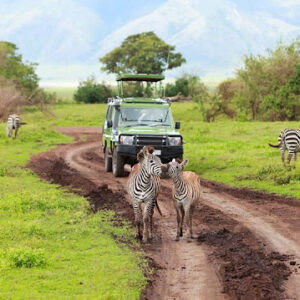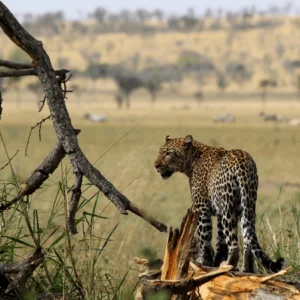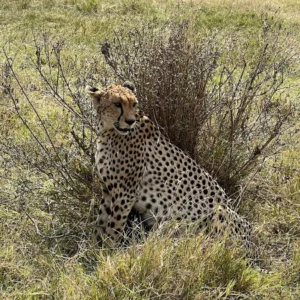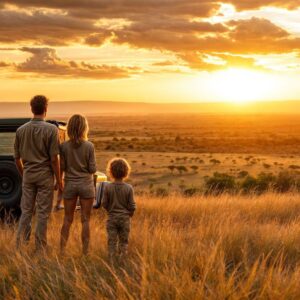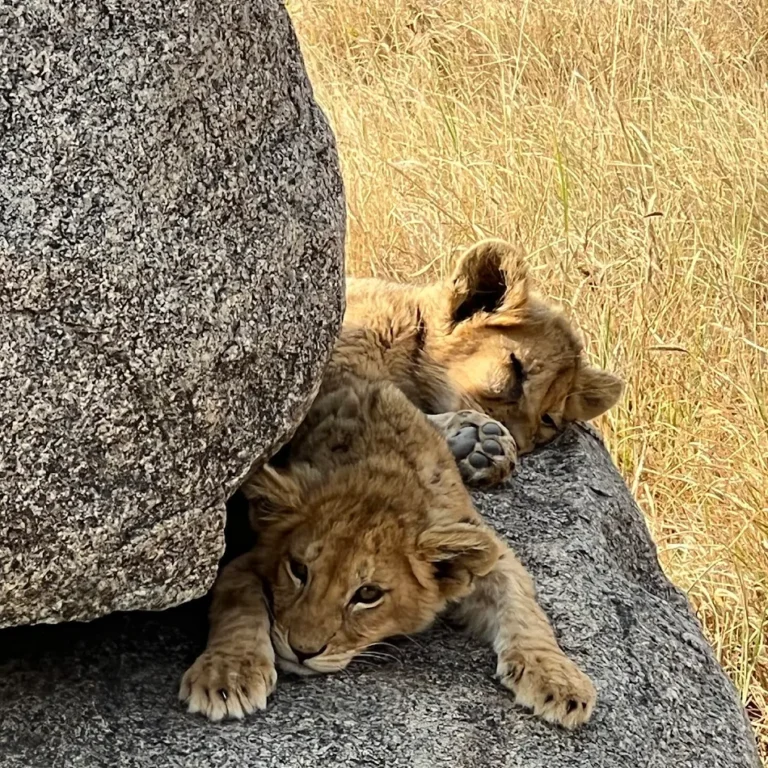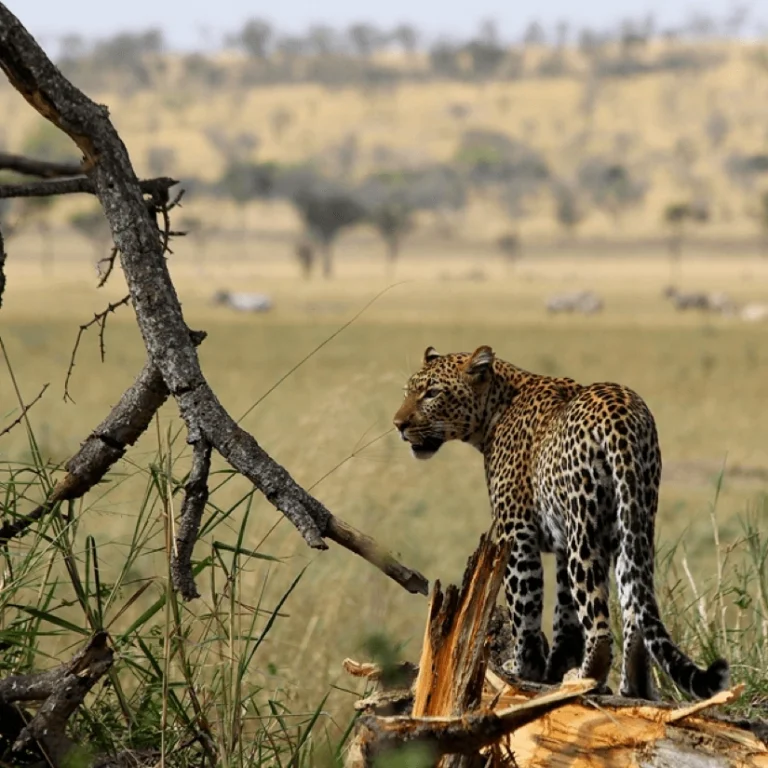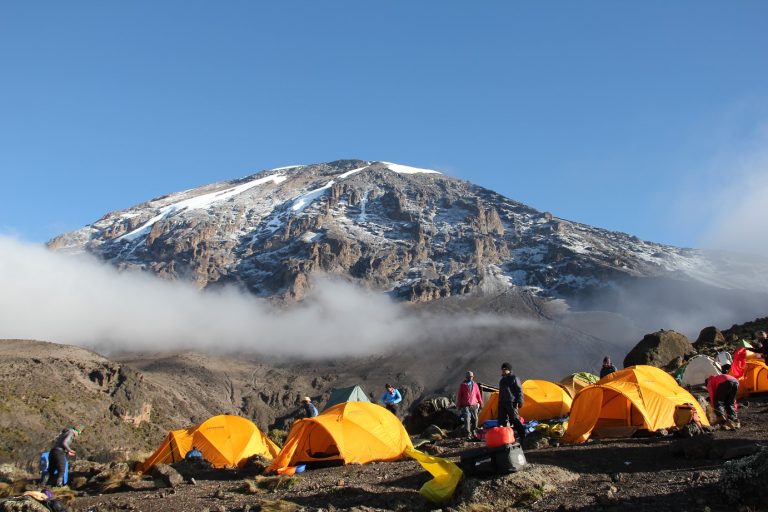The Great Wildebeest Migration, a colossal movement of over two million wildebeest, zebras, and gazelles across the vast plains of Tanzania and Kenya, is arguably the most spectacular wildlife event on the planet. Witnessing this epic journey is a privilege, a sensory immersion into the raw power and beauty of nature. To fully embrace every thrilling moment, from the thunder of hooves to intimate predator encounters, coming prepared with the right gear is absolutely essential.
For a Wildebeest Migration safari, essential items include appropriate clothing (lightweight, neutral colors, warm layers), sun protection (hat, sunglasses, sunscreen), insect repellent, a good pair of walking shoes, binoculars, a camera with extra memory cards and batteries, a first-aid kit, and travel documents. Don’t forget a reusable water bottle and entertainment for downtime. Beyond your safari spirit and sense of adventure, certain items will significantly enhance your experience, ensuring comfort, enabling incredible photography, and safeguarding your well-being in the African bush. Here are the must-have items to pack for your Wildebeest Migration safari.
1. Binoculars: Your Window to Distant Wonders
While your safari vehicle will get you close to the action, many incredible moments of the migration unfold in the distance. Herds stretching for miles, a distant predator stalking its prey, or a rare bird perched high on a tree – these are moments you don’t want to miss. One of the most important items for any safari is a good pair of binoculars. The wildebeest migration attracts not only herds of wildebeests but also a plethora of other wildlife, including zebras, elephants, and various bird species. Binoculars will allow you to observe these magnificent animals up close without disturbing them, enhancing your wildlife experience.
High-quality binoculars (8×42 or 10×42 are excellent choices) are non-negotiable. They bring distant wildlife into sharp focus, allowing you to observe intricate details of animal behavior, spot camouflaged creatures, and fully appreciate the scale of the migration. Sharing a pair with your travel companion or having one per person will prevent missed opportunities and enhance every game drive.
2. Camera with Telephoto Lens: Capturing Epic Moments
You’re about to witness a once-in-a-lifetime event, and you’ll want to capture it. While smartphone cameras have improved, nothing compares to a dedicated camera with a telephoto lens for wildlife photography. Capturing the beauty of the migration requires an excellent camera, preferably equipped with a telephoto lens. Wildlife photography is all about getting that perfect shot, and a telephoto lens will allow you to photograph animals from a distance. Whether you’re snapping pictures of the wildebeests crossing the river or lions lounging in the sun, a camera will help you preserve those memories long after the safari is over.
DSLR or Mirrorless Camera. These offer superior image quality and the flexibility to change lenses.
Telephoto Lens (e.g., 200mm, 300mm, or 400mm). Crucial for bringing distant animals closer. A lens in the 100-400mm or 150-600mm range is ideal for capturing detailed shots of wildebeest crossings, predator action, or elusive birds without disturbing them.
Plenty of Batteries and Memory Cards. You’ll be taking far more photos and videos than you anticipate. Charging opportunities in camps can be limited, so spare batteries are essential.
Dust Protection. The safari environment is dusty. Bring a lens cloth, a blower brush, and zip-lock bags to protect your camera gear when not in use.
Capturing the migration with a powerful lens will allow you to relive the magic long after you’ve returned home.
3. Sun Protection: Battling the Equatorial Sun
Spending long hours under the African sun can be harsh on your skin. Pack a high-SPF sunscreen, a wide-brimmed hat, and sunglasses to protect yourself from harmful UV rays. Sun protection is crucial not just for comfort but also for preventing sunburn and heat-related illnesses during your adventure. The African sun, especially near the equator, is incredibly strong. You’ll spend many hours in open-sided safari vehicles, and adequate sun protection is paramount to prevent sunburn and heatstroke.
High SPF Sunscreen. Apply liberally to all exposed skin, and reapply frequently throughout the day.
Wide-Brimmed Hat. Essential for shielding your face, neck, and ears from direct sun. Choose one with a chin strap to prevent it from flying off during windy game drives.
Sunglasses. Protect your eyes from harsh glare and UV rays.
Lightweight, Long-Sleeved Shirts: Provide excellent physical barriers against the sun. Opt for quick-drying fabrics in neutral colors.
4. Comfortable Walking Shoes: For Camp and Occasional Walks
Safari often involves walking or hiking to get closer to wildlife, so a pair of comfortable walking shoes is essential. Choose shoes that provide good support and are broken in to avoid discomfort. Consider lightweight hiking boots or sturdy sneakers that will keep your feet happy on rugged terrain. While the majority of your wildlife viewing will be from a vehicle, comfortable footwear is still a must.
Closed-Toe Shoes. A pair of well-broken-in sneakers, walking shoes, or light hiking boots will be perfect for walking around camp, enjoying nature walks (if your safari includes them), or moving around pre/post-safari. They’ll protect your feet from dust, small stones, and insects Must-Have Items to Take for Wildebeest Migration Safari.
Sandals or Flip-Flops. Ideal for relaxing at your lodge or camp in the evenings, by the pool, or if you’re combining your safari with a beach extension in Zanzibar.
Avoid heavy, bulky hiking boots unless your itinerary explicitly includes strenuous multi-day walking treks.
5. Lightweight and Breathable Clothing: Layers are Key
The African climate can be warm during the day and cooler at night, so it’s best to dress in layers. Lightweight and breathable clothing made from moisture-wicking fabric will keep you cool during the day and can be layered for warmth in the evenings Must-Have Items to Take for Wildebeest Migration Safari. Neutral colors are preferable, as they’ll help you blend in with the environment while avoiding attracting unwanted attention from bugs. Safari weather can change dramatically throughout the day, making layering the golden rule of safari attire.
Fabrics. Prioritize natural, breathable fabrics like cotton or linen, and moisture-wicking synthetics. They dry quickly and keep you cool.
Colors. Stick to neutral colors such as khaki, olive green, tan, beige, brown, and grey Must-Have Items to Take for Wildebeest Migration Safari. These colors blend into the environment, are less likely to attract tsetse flies (which are drawn to dark blue and black), and don’t stand out to animals. Avoid bright colors, white (gets dirty instantly), and military-style camouflage.
Layering Strategy:
Early Mornings/Evenings. A warm fleece jacket or insulated puffy jacket over a long-sleeved shirt and trousers.
Midday. Often just a short-sleeved shirt and shorts/zip-off trousers.
Versatility. Zip-off convertible pants are incredibly practical for adapting to changing temperatures. Long sleeves and pants also provide protection from sun and insects.
Aim for 3-5 sets of safari-appropriate outfits, as most camps offer laundry services.
6. Reusable Water Bottle: Stay Hydrated, Stay Sustainable
Staying hydrated is vital while on safari, especially in the heat. A reusable water bottle is both eco-friendly and convenient. Many lodges and camps provide refill stations, ensuring you can keep hydrated while minimizing plastic waste. Look for a bottle that has insulation to keep your water cool. Staying hydrated is crucial in the African heat and dry climate. A reusable water bottle (or two) is an eco-friendly and practical choice.
Your safari operator will provide plenty of bottled water, but having your own reusable bottle reduces plastic waste and makes it easy to carry water with you on game drives. Many lodges also offer filtered water stations for refilling.
7. Insect Repellent: Your Shield Against Bites
Insects, particularly mosquitoes (which can carry malaria), are a reality in many safari areas, especially during dawn and dusk.Insects, particularly mosquitoes, can be bothersome during a safari. Packing a good quality insect repellent is essential to keep those pesky bugs at bay. Choose a repellent with DEET or another effective ingredient, and make sure to apply it regularly to prevent bites.
DEET-based Repellent. Products containing DEET (30-50%) are generally the most effective.
Application. Apply repellent to exposed skin, particularly during the early morning and late afternoon/evening hours when mosquitoes are most active.
Malaria Prophylaxis. Consult your doctor about anti-malarial medication well before your trip.
Protection against insect bites is vital for both comfort and health.
8. Daypack: Your Safari Companion
A daypack is perfect for carrying your personal items during daily excursions. It should be lightweight yet spacious enough to hold your essentials, including your camera, binoculars, water bottle, snacks, and first-aid supplies. A durable and comfortable daypack will enhance your mobility during the safari.
A small, comfortable daypack (15-25 liters) is indispensable for daily game drives.
What to Carry. It’s perfect for carrying your camera, binoculars, extra layers, water bottle, sunscreen, hat, and any personal items you want readily accessible in the vehicle.
Practicality. Choose one that’s lightweight, easy to access, and perhaps even foldable if space is a premium.
9. Travel Documents: Essential Paperwork
Lastly, never forget your travel documents! Keep your passport, visa, travel insurance, and any necessary permits organized and accessible. A secure travel document holder can help you keep everything in one place, ensuring a smooth travel experience.
Beyond clothing and gear, your vital documents are the most important items.
Passport. Ensure it’s valid for at least six months beyond your intended departure date and has sufficient blank pages for visas and stamps.
Visa. Obtain your Tanzanian (or Kenyan, depending on where your migration safari is) visa in advance. Many nationalities can apply for an e-visa online.
Flight Tickets & Itinerary. Digital copies and a printed backup.
Travel Insurance Details. Crucial for any unexpected medical emergencies, trip cancellations, or lost luggage.
Yellow Fever Vaccination Certificate. Required if you’re arriving from or transiting through a country with a risk of yellow fever transmission.
Copies. Keep digital copies (on your phone, email, cloud storage) and physical photocopies of all important documents stored separately from the originals.
- What Do You Wear On A Serengeti Safari?
- Tanzania Safari Packing List For Solo Travelers
- Kilimanjaro Packing list
- Must-Have Documents to Carry When Climbing Kilimanjaro
- What to Pack for a Great Migration Safari
Must-Have Items to Take for Wildebeest Migration Safari FAQs
For a wildebeest migration safari, essential items include neutral-colored, lightweight clothing for layering, sturdy footwear, a wide-brimmed hat, and a warm jacket for cooler mornings and evenings. Key gear includes binoculars, a camera with a zoom lens, and power adapters/banks, while a flashlight, sun protection, and a personal first-aid kit are also crucial. The great migration is a year-round event in Tanzania, but the specific location and activity vary by season:
Why Does the Great Migration in Africa Occur?
The Great Migration occurs because millions of herbivores, including wildebeest, zebras, and gazelles, must follow the seasonal rains to find fresh grazing lands and water. As grasses dry up in one area, the herds move to new regions to survive, completing a year-round cycle between the Serengeti and Masai Mara ecosystems.
What are the most important items to bring for a Wildebeest Migration Safari?
Binoculars, a camera with a telephoto lens, sun protection (hat, sunscreen, sunglasses), lightweight neutral-colored clothing for layering, comfortable closed-toe shoes, a reusable water bottle, insect repellent, a daypack, and all essential travel documents.
Why are neutral colors important for safari clothing?
Neutral colors (khaki, olive green, tan, brown) help you blend into the environment, making you less conspicuous to wildlife. They also tend to attract fewer tsetse flies, which are drawn to dark blues and blacks.
Do I need hiking boots for a migration safari?
Not typically, unless your itinerary includes strenuous, multi-day walking treks. Comfortable sneakers or walking shoes are usually sufficient for around camp and light walks.
How many extra camera batteries should I bring?
It’s highly recommended to bring at least 2-3 spare camera batteries, as charging opportunities can be limited in remote safari camps, and you’ll be taking many photos.
Is insect repellent really necessary?
Yes, absolutely. Mosquitoes (especially at dawn and dusk) are present in many safari areas and can carry malaria. A DEET-based repellent is highly recommended.
Why should I bring a reusable water bottle?
It helps reduce plastic waste, which is important for environmental sustainability in national parks. Many lodges and camps offer filtered water for refilling.
Should I pack long sleeves and long pants even if it’s hot?
Yes. Long sleeves and pants offer excellent protection against the intense equatorial sun, thorny bushes, and insect bites, especially during early morning and late afternoon game drives.
What kind of bag should I use for my safari?
A soft-sided duffel bag is highly recommended, especially if your itinerary involves light aircraft transfers, as these often have strict weight and size limits for luggage.
Do I need a Yellow Fever certificate?
You may need one if you are arriving from or have recently transited through a country with a risk of yellow fever transmission. Check current requirements for Tanzania before you travel.
What kind of binoculars are best for a safari?
Binoculars with an 8×42 or 10×42 magnification are generally considered ideal for wildlife viewing, offering a good balance of magnification, field of view, and light-gathering capability.
What You Didn’t Know About the Great Migration
The Great Migration involves more than just wildebeest, as zebras and gazelles are also key participants, and its path is a continuous, clockwise cycle through the Serengeti-Mara ecosystem, not a single trip from Tanzania to Kenya. Other lesser-known facts include the massive scale, with up to 1,000 animals per square kilometer, the presence of a less famous but still dramatic Grumeti River crossing, and the fact that the migration is a continuous 800 km journey following the rains.
It’s a year-round event: The migration is always happening, and the specific location depends on the season and rainfall. The animals are never all in one place at the same time.
More than just wildebeest: While wildebeest are the largest group, the migration also involves hundreds of thousands of zebras and gazelles.
Location is specific: The migration is always in Tanzania. Parts of the herd may move into Kenya’s Masai Mara, but the large majority remain in northern Tanzania’s Serengeti.
River crossings are not always what they seem: The dramatic river crossings, like the one across the Mara River, happen in both Tanzania and Kenya. A herd may cross into Kenya but end up finishing the crossing back in Tanzania, as the crossings are not necessarily between the two countries.
There are multiple crossings: The famous Mara River is not the only river crossed. A smaller, though still dramatic, crossing occurs over the Grumeti River in the Western Corridor of the Serengeti.
Where To Witness the Great Migration in East Africa?
You can witness the Great Migration in East Africa primarily in Serengeti National Park, Tanzania, and Maasai Mara National Reserve, Kenya, which together form a cross-border ecosystem. The best location depends on the time of year, with the Serengeti offering year-round viewing and the Maasai Mara particularly known for the dramatic river crossings from July to October.
Do I Really Want to See the Great Migration?
Yes, if you want to witness an awe-inspiring wildlife spectacle, the Great Migration is a powerful experience that many consider a must-see. However, it’s important to consider that it can be expensive, requires significant planning, and seeing a dramatic river crossing is not guaranteed. You should weigh the incredible sights, such as calving season, massive herds, and predator-prey interactions, against the costs and potential unpredictability.
Guide to the Great Migration River Crossing
To guide a trip to the Great Migration river crossing, time your visit between June and October, and book with a specialist safari company to secure a stay in a strategic location, like the northern Serengeti or Maasai Mara, to maximize your chances of witnessing a crossing. Be prepared for dramatic scenes where large numbers of wildebeest and zebra navigate treacherous waters guarded by Nile crocodiles and hippos.
What Makes the Great Migration So Special?
The Great Migration is special because it’s a massive, cyclical event of over a million animals, primarily wildebeest, following ancient routes across Tanzania and Kenya in pursuit of grass and water. It is considered one of the planet’s most dramatic natural spectacles, showcasing the immense power of nature, a cycle of life and death, and its crucial role in sustaining the ecosystem.
Planning Your African Safari
• Consider your safari budget
• Research destinations
• Book in advance
• Book accommodation
• Consider internal flights
• Book a guide or tour operator
• Plan activities
• Pack accordingly
• Plan for hidden costs
• Respect wildlife

